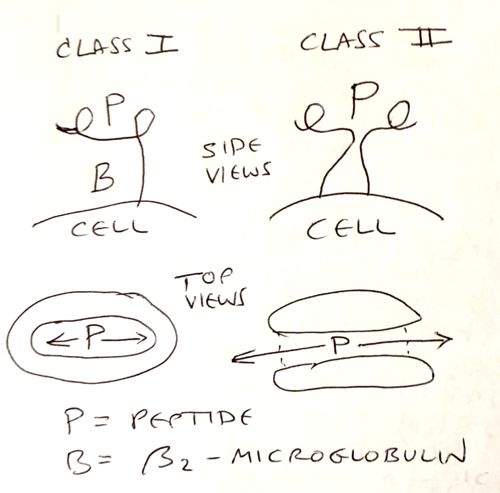User:Eric Martz/MHC Answers: Difference between revisions
Jump to navigation
Jump to search
Answers to Open-Ended Questions about MHC
Eric Martz (talk | contribs) No edit summary |
Eric Martz (talk | contribs) No edit summary |
||
| Line 17: | Line 17: | ||
</li><li> | </li><li> | ||
<!--4--> | <!--4-->[[Image:Mhc-schematic-sketches.jpg|500px]] | ||
</li><li> | </li><li> | ||
Revision as of 23:30, 17 July 2020
Answers to Open-Ended Questions about MHCAnswers to Open-Ended Questions about MHC
Here are answers to the questions provided in a document with the Major Histocompatibility Complex (MHC) tutorial available through MolviZ.Org. Suggestions and feedback to Eric Martz.
- "Major Histocompatibility Complex". Early studies of tissue grafts between individuals of the same species (allografts) discovered that MHC differences caused the most rapid and intense rejection by the immune system, hence "major". Other genetic differences causes slower, less intense rejection, and were termed "minor histocompatibility" genetic loci.
- All nucleated cells express MHC class I, although the levels of expression vary from tissue to tissue (and a few cell types express undetectable levels). Red blood cells, which lack nuclei, do not express MHC class I. A virus can target any cell type. In order for cytotoxic T cells to detect virus infection, all cell types must express MHC class I.
- Only "professional" antigen-presenting cells (APC), such as dendritic cells and macrophages, constitutively express class II MHC. B lymphocytes also express MHC class II, which enables them to receive help from T helper cells. Professional APC phagocytose or endocytose whatever they encounter. B lymphocytes endocytose the specific antigen bound by their antibody receptors, presenting the resulting peptides on their MHC class II to Th cells.
-
